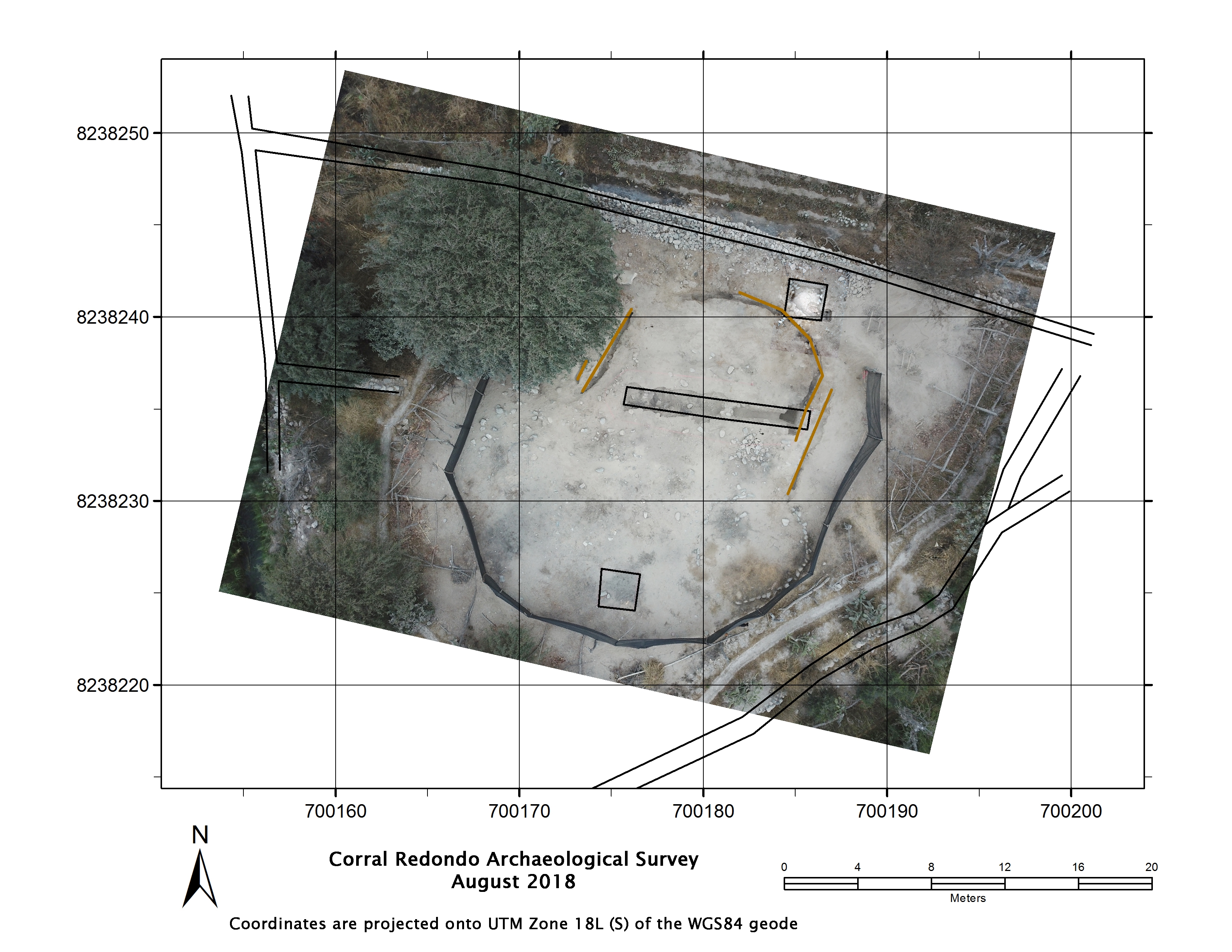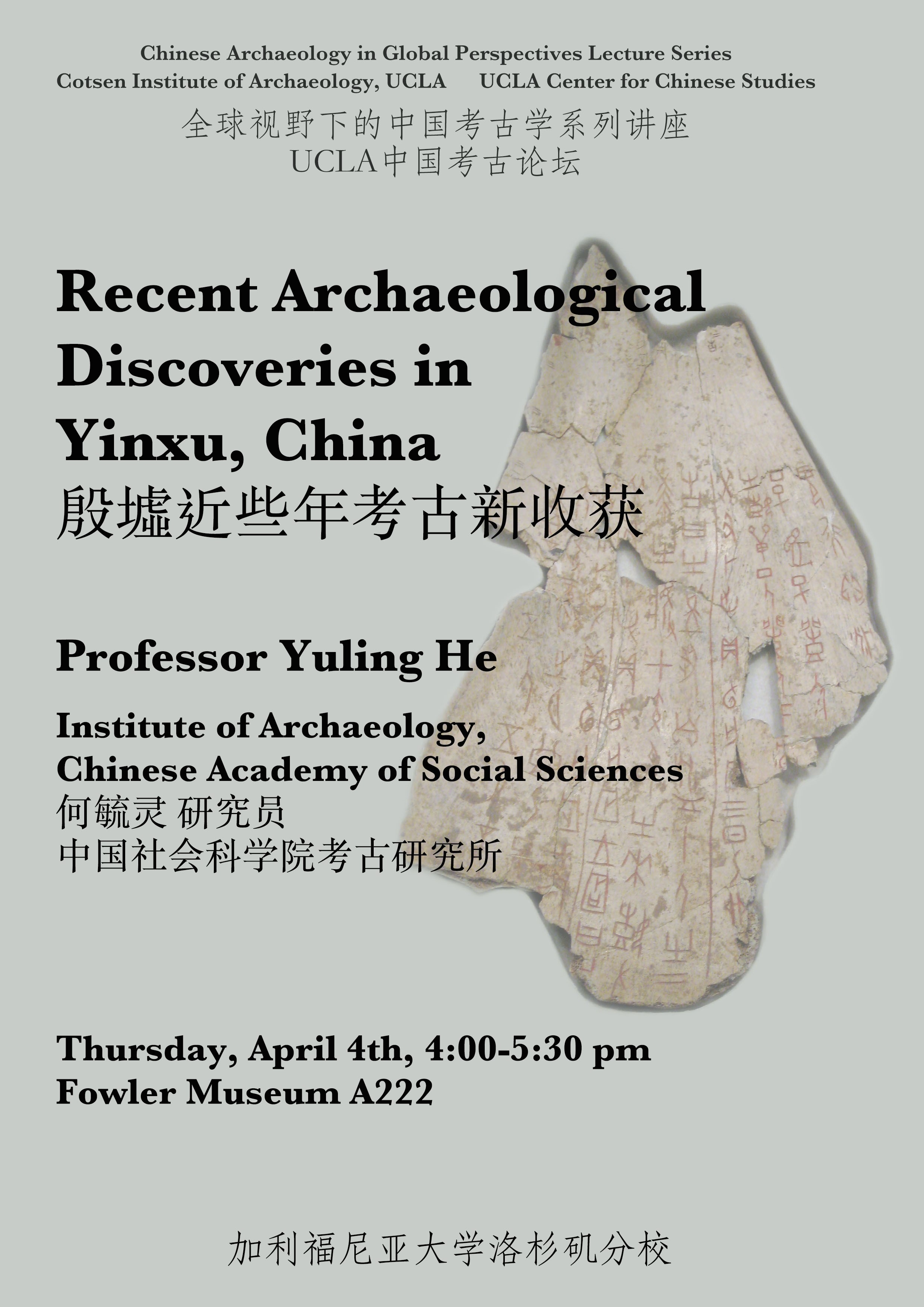Past Events
Interested in Cotsen events? Sign up for our mailing list.William B. Trousdale is Curator Emeritus at the Smithsonian Institution and Principal Investigator of the Helmand Sistan Project. Trousdale served both at the National Museum of Natural History and at the Freer Gallery in his 35 year career in archaeology.
Mitchell Allen is a Research Associate at the Smithsonian and the Archaeological Research Facility at UC Berkeley, founded two archaeology-focused publishing houses, AltaMira Press and Left Coast Press, in a 40 year scholarly publishing career.
Abstract:
This presentation will off er a brief overview of the Helmand Sistan Project (HSP), the only multidisciplinary, long-term, comprehensive survey and excavation project ever conducted in the southwest corner of Afghanistan. In the field in the 1970s and sponsored jointly by the Smithsonian and the government of Afghanistan, HSP identified almost 200 sites in the Sistan region-- and excavated 12 of them-- to establish the fi rst cultural history of the region from the Bronze Age to the present, one that has not been superseded because of four decades of subsequent political and military conflict. With publication of this legacy project now underway, we report on a few highlights of the 5000 year history of the region, including a previously unknown early Iron Age culture and a pristine archaeological landscape from the 15th century CE.
Contact Sumiji Takahashi
Email sutakahashi@ioa.ucla.edu
Phone 310-825-4169
Please join the Y&S Nazarian Center for Israel Studies in “The Dig,”. This award-winning one-woman play, accompanied by live music written and performed by Yuval Ron, follows an American archeologist's journey to discover the truth about an artifact in Israel that could have transformational implications for Israel, the Middle East and the world.
To RSVP, visit https://www.international.ucla.edu/israel/event/13721.
Contact Sumiji Takahashi
Email sutakahashi@ioa.ucla.edu
Phone 310-825-4169
Ahmanson lecturer, Professor Filomena Limão of the Universidade Nova de Lisboa, will give her talk, “The Late Roman Villa of Santiago da Guarda (Ansião,Portugal): Architecture and Mosaics in a living palimpsest”, Sunday April 28th 2019, at 2PM in the Fowler Museum, Room A222 at UCLA.
Contact
Phone
Alexander Ahrens is a Senior Researcher with the Damascus Branch, Orient Department of the German Archaeological Institute. Currently, he is a Visiting Scholar at the Joukowsky Institute for Archaeology and the Ancient World at Brown University (as recipient of a 2019 AIA/DAI Study in the U.S. Fellowship). He holds a PhD in Near Eastern Archaeology from the University of Bern (Switzerland), and a MA in Near Eastern Archaeology and Egyptology from the University of Tübingen (Germany). Apart from his most recent project work in Jordan, he has actively participated in excavations at several sites in Syria, Lebanon, Egypt, and Turkey.

Title:
The Wadi Shuʿaib Archaeological Survey Project: First Results from Field Research 2016−2018
Abstract:
The Wadi Shuʿaib Archaeological Survey Project (WSAS) was initiated in 2016. The Wadi Shuʿaib Archaeological Survey Project (WSAS) concentrates on a thorough survey and reevaluation of all archaeological and historical sites in the Wadi Shuʿaib, ranging from the Neolithic Period to the Ottoman Period, starting from immediately south of the city of as-Salt down to the city of Shuna South (Shuna as-Janubiyyah) located at the mouth of the wadi in the Jordan Valley. As part of the survey project, since 2017 excavations are carried out at the site of Tell Bleibil (Tall Bulaybil), located at the mouth of the alluvial fan of the Wadi Shuʿaib in the southern Jordan Valley.
Contact Sumiji Takahashi
Email sutakahashi@ioa.ucla.edu
Phone 310-825-4169
Speaker:
Dr. Kathleen Lynch
University of Cincinnati
Abstract:
Athenian pottery was exported throughout the Mediterranean in the Classical Period. Perhaps surprisingly, it found eager consumers in the Persian Empire, or rather, in territory controlled by the Persians during the Greek Classical period. The presentation will consider what the imported Greek pottery meant in the context of the Achaemenid empire, with a special focus on Gordion in central Turkey. The former Phrygian capital turned Persian outpost is an anomaly with its abundant, high quality Athenian pottery. Typically Athenian pottery tends to be found in coastal settlements of the eastern Mediterranean, but Gordion is 500 km from any coast. What was the appeal of Athenian pottery?
Contact Sumiji Takahashi
Email sutakahashi@ioa.ucla.edu
Phone 310-825-4169
Speaker:
Dr. Sonia Zarrillo
Postdoctoral Fellow
Cotsen Institute of Archaeology, UCLA
Abstract:
Throughout human history, from our earliest ancestors through to modern societies, plants were of vital significance. They have been essential to diet, used as medicines and in ceremonies, fashioned into a myriad of tools, containers, adornments, and musical instruments, depicted in artwork and used as emblems, and relied on as a source of fuel and building material.
Paleoethnobotany, or archaeobotany, is the study of the interrelationships between people and plants in the past. More specifically, paleoethnobotany is the recovery, analyses, and interpretation of plants from archaeological contexts to answer questions of behavior and ecological interactions between past peoples and plants.
In this lecture, case studies from past and current research – from the northern Plains of North America to the South American Andes – will be presented to illustrate the range of knowledge to be gained from paleoethnobotanical studies, followed by research and volunteer opportunities for students and the interested public.
Contact Sumiji Takahashi
Email sutakahashi@ioa.ucla.edu
Phone 310-825-4169
Dr. Jennie Ebeling
Associate Professor
Department of Archaeology
University of Evansville in Indiana
Abstract:
Bread and other grain-based foods were not only staples in the ancient Israelite diet; they were also staples in the ritual acts that accompanied the worship of several deities in ancient Israel. In addition to the state god YHWH, who required regular offerings of lechem hapanim (“bread of the presence”) in the Tabernacle and the Jerusalem Temple (Exodus 25:30, 39:36, 40:23; Leviticus 24: 5-9; Numbers 4:7; 1 Kings 7:48), the Queen of Heaven (Jeremiah 7:18, 44:17-25) was worshipped by families in Jerusalem and throughout Judah with cakes that were marked with her image. Although the biblical writers did not record the details of these practices, the remains of ritual activity in a variety of Iron Age (ca. 1200-586 BCE) archaeological contexts are strongly associated with areas where bread and other foods were prepared and consumed. In this presentation, I will discuss the evidence for feeding the gods in Israelite houses, the house of YHWH, and other contexts, and suggest that the ritual importance of bread in ancient Israel began with women’s food offerings to household deities.
For more details see: https://www.cjs.ucla.edu/event/feeding-the-gods-in-ancient-israel/
Contact Center for Jewish Studies
Email cjsrsvp@humnet.ucla.edu
Phone (310) 267-5327
Dr. Elizabeth (Lisa) Matisoo-Smith
Professor of Biological Anthropology and Chair
Department of Anatomy, University of Otago
The Powers and Pitfalls of Molecular Archaeology
In 1989 it was announced in Nature that DNA could successfully be extracted from
archaeological bone, and thus was born the field of molecular archaeology. The last
decade has seen the field flourish with the development of Next Generation Sequencing
(NGS) technology. While the results of many molecular studies have contributed
positively to our understanding of prehistory, others have not. It must be recognised that
molecular techniques are just tools, and like all tools, they are only useful if used
properly. What is most important is that the right questions are asked, the appropriate
samples to answer those questions are collected, and the results interpreted in the
context of the current knowledge. This paper discusses the past, present and future of
molecular archaeology, focusing on both the strengths and the weaknesses of the
application of molecular techniques and the interpretation of molecular data with
regards to reconstructing the prehistory of the Pacific.
Contact Sumiji Takahashi
Email sutakahashi@ioa.ucla.edu
Phone 310-825-4169
Contact Sumiji Takahashi
Email sutakahashi@ioa.ucla.edu
Phone 310-825-4169

Corral Redondo, Peru: 75 Years Later
Dr. Hans Barnard, UCLA
Dr. Danny Zborover, Institute for Field Research
Vanessa Muros, UCLA
ABSTRACT
Corral Redondo is located in southern Peru, where the Chorunga River joins the Ocoña River on its way from the Andes to the Pacific Ocean. In 1943 Corral Redondo briefly shot to fame after local villagers discovered the site and recovered 96 Wari period (ca. 600‒1000 CE) blue-and-yellow feathered panels, stored inside eight large ceramic face-neck jars. Inka period (ca. 1450‒1550 CE) silver and bronze vessels, as well as gold and silver figurines of camelids and humans, dressed in miniature garments, were found elsewhere on the site. The type and number of artifacts found suggests that the site functioned as a ceremonial compound in both Wari and Inka times. However, because the site was looted and the finds dispersed to museums in Peru and elsewhere, all archaeological information associated with them has obviously been lost. In the summer of 2018 a team from the Cotsen Institute, the University of Chicago, the Institute for Field Research,and local archaeologists visited the Ocoña Valley to investigate and record the remains of Corral Redondo and its wider environs. In this presentation, the first results of this ongoing research endeavor will be discussed.
Contact Sumiji Takahashi
Email sutakahashi@ioa.ucla.edu
Phone 310-825-4169
- ‹ previous
- 27 of 49
- next ›



